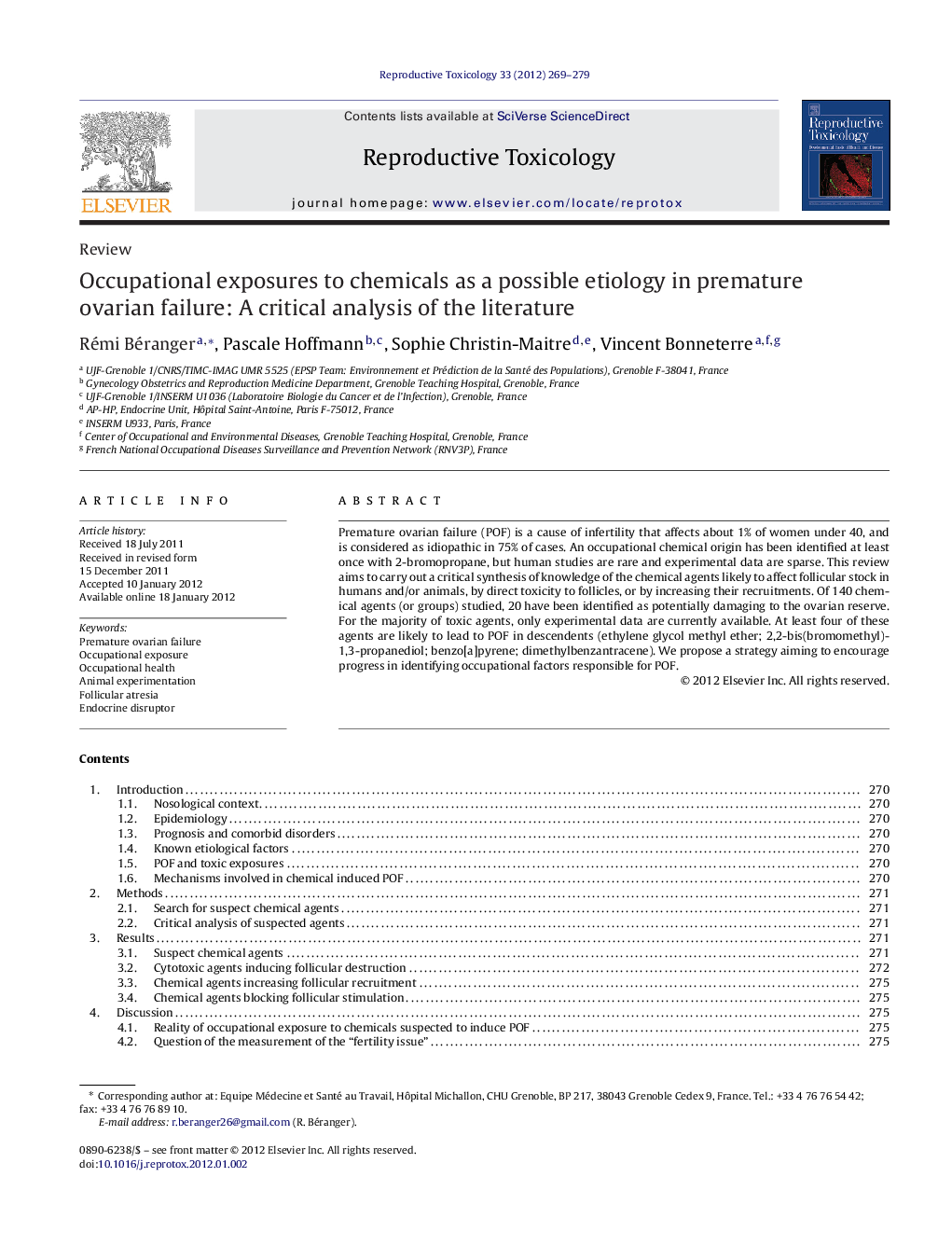| Article ID | Journal | Published Year | Pages | File Type |
|---|---|---|---|---|
| 2594165 | Reproductive Toxicology | 2012 | 11 Pages |
Premature ovarian failure (POF) is a cause of infertility that affects about 1% of women under 40, and is considered as idiopathic in 75% of cases. An occupational chemical origin has been identified at least once with 2-bromopropane, but human studies are rare and experimental data are sparse. This review aims to carry out a critical synthesis of knowledge of the chemical agents likely to affect follicular stock in humans and/or animals, by direct toxicity to follicles, or by increasing their recruitments. Of 140 chemical agents (or groups) studied, 20 have been identified as potentially damaging to the ovarian reserve. For the majority of toxic agents, only experimental data are currently available. At least four of these agents are likely to lead to POF in descendents (ethylene glycol methyl ether; 2,2-bis(bromomethyl)-1,3-propanediol; benzo[a]pyrene; dimethylbenzantracene). We propose a strategy aiming to encourage progress in identifying occupational factors responsible for POF.
► 3 pathophysiological mechanisms are suspected in premature ovarian failure (POF). ► 20 chemical agents are strongly suspected of being harmful to ovarian reserve in animals. ► Nevertheless, human exposure to these compounds is nowadays marginal, except for PAHs. ► An observatory of professional and environmental exposures in POF patients is needed.
